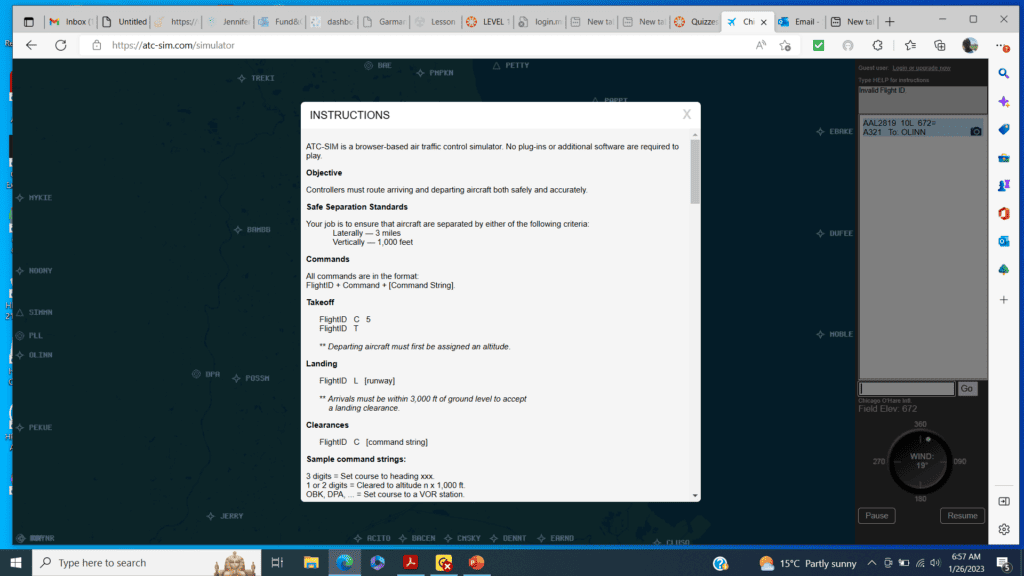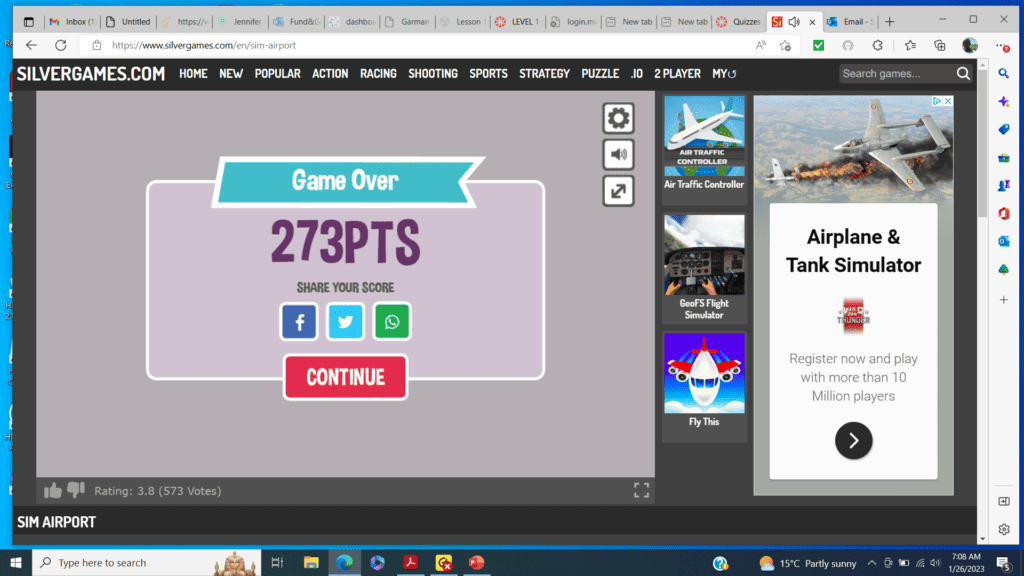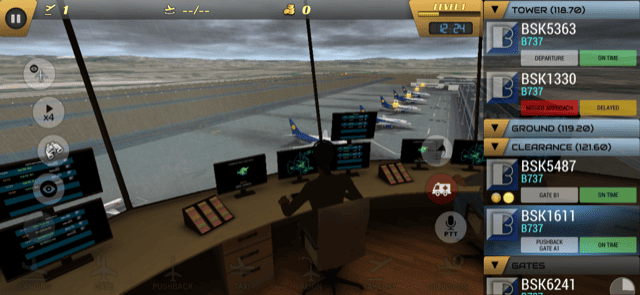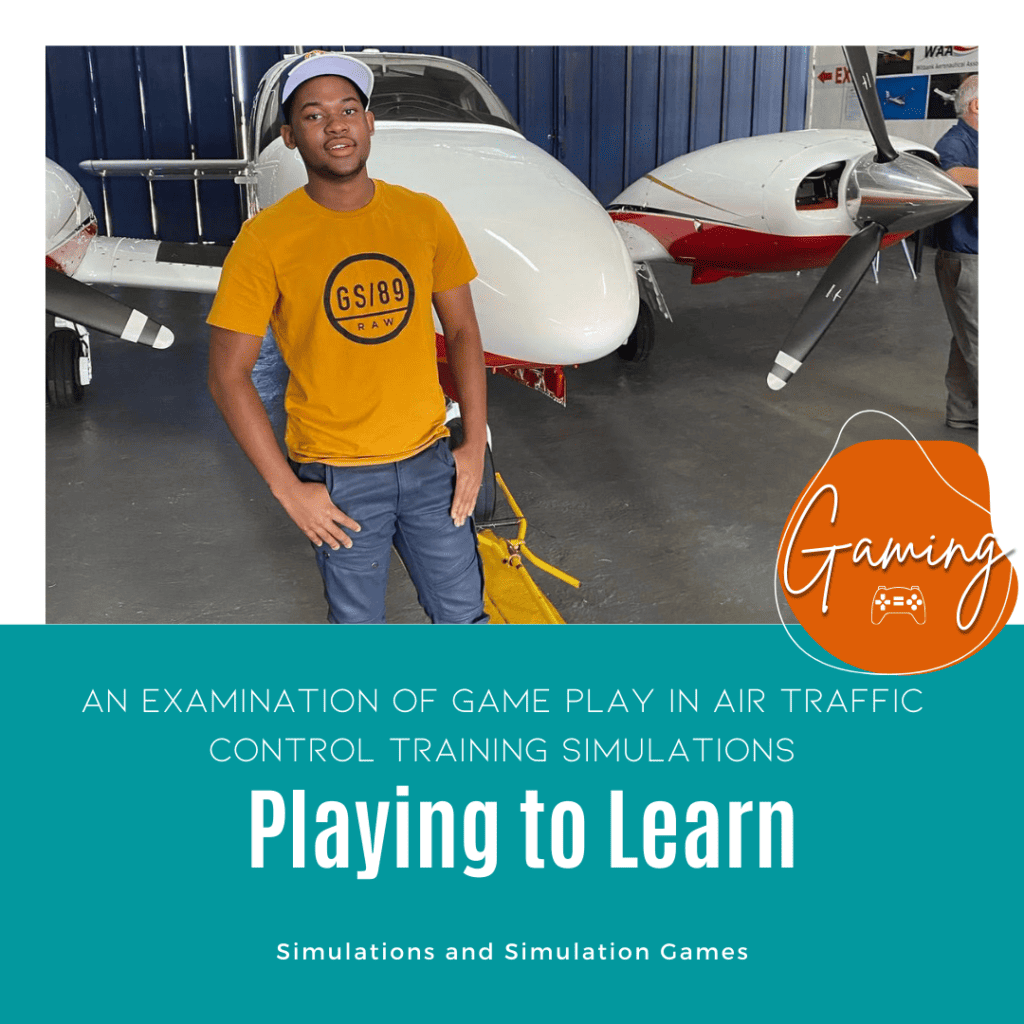The difference between simulations and serious games
Simulations and serious games are two different approaches to learning that I have come across in recent years. Both have their own unique advantages and disadvantages, and choosing the right approach for a particular learning situation depends on the goals and objectives of the learning experience. According to Kapp (2014), one key difference between simulations and serious games is the level of control that learners have over the outcome. In simulations, I am typically in control of the outcome, whereas in serious games, the outcome is often predetermined.
Simulations for Training Air Traffic Controllers:
ATC Sim, Sim Airport, and Unmatched Air Traffic Control are all simulations that I have come across that are designed to simulate the experience of working as an air traffic controller.
Game Play Mechanics:
ATC Sim is a simulation that allows me to take on the role of an air traffic controller at various airports around the world. The game features realistic aircraft behavior, detailed airport environments, and challenging weather conditions. It also includes a tutorial mode that allows me to learn the basics of air traffic control. However, I have found that the rules of the game are not very clear, and I had difficulty understanding how to play it even after reading the instructions. According to our readings this week, “the difference lies in the fact that the purpose of these processes in games is designed to be entertaining, fun, and engaging, while the purpose of these processes in training simulators are designed to qualify and track the development of specific skills in its operators” (Narayanasamy, V., Wong, K. W., Fung, C. C., and Rai, S. 2006). It appears it has a specific niche that these types of games are designed for-hence the frustration.

ATC Sim is a realistic simulation of an air traffic control environment, with a variety of options for trainees to practice their skills. It has been used by various aviation organizations and airports to train air traffic controllers, as well as for research and development purposes. The Federal Aviation Administration (FAA) in the United States has been using ATC sim to train air traffic controllers for many years.
Sim Airport is a simulation game that is great for younger children and those who are new to the concept of air traffic control. The game is very basic and easy to understand, with a lose/win state. The game is over when aircraft collide, and there are levels and points based on the number of successful landings. However, I found that it was hard to successfully guide each aircraft to its landing strip or pad without another crashing it–which is the main goal of the game (Knowledge Guru, 2014).

Unmatched Air Traffic Control is a mobile simulation game with large file sizes, great graphics, and easy controls that make it easy for me to understand what the goals of the game are. The game is also very convenient as it can be played on mobile devices. However, I wish there was a way to speed up taxing and takeoff, as it feels a bit slow for realism. The goal of the game is to help the aircrafts to land and takeoff safely.

Overall, these simulations provide a challenging and realistic simulation experience for me as a player, allowing me to practice and test my knowledge and skills in a safe and controlled environment. However, I have found that each simulation has its own unique strengths and weaknesses, and it is important to choose the right one based on the goals and objectives of the learning experience.
How else would you use a simulation?





